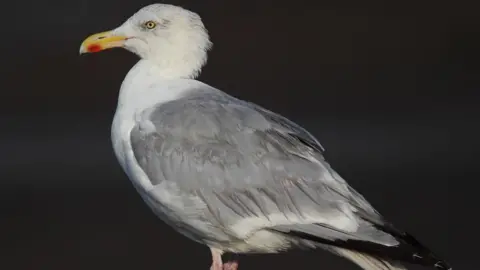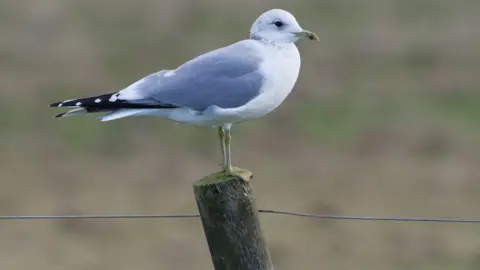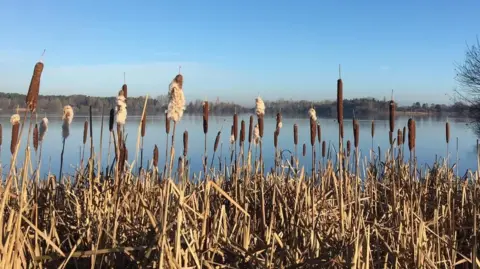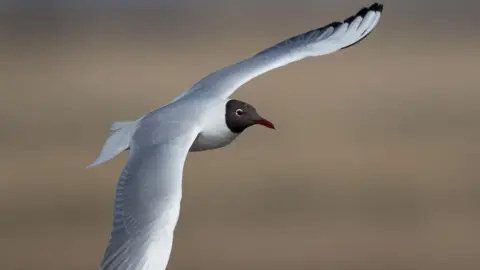Inland reserve hailed as 'vital' refuge for gulls
 Tim Hill
Tim HillA nature reserve in a landlocked county has become a "vital" roosting site for five endangered species of gull.
The Herts and Middlesex Wildlife Trust said its Hilfield Park Reservoir Nature Reserve, between Elstree and Bushey, Hertfordshire, had become a refuge for the seafaring birds, including herring gulls, which are currently in decline.
The trust said that although they were commonly known as "seagulls", scientifically "there is no such thing".
People and wildlife officer Josh Kalms said a volunteer survey of the site showed in 1994 there were 28,184 gulls roosting, dropping to 19,693 in 2004 - and 11,794 in 2024.
 Tim Hill
Tim HillThe site, managed by the trust and owned by Affinity Water, was "a vital roost site for five species of gulls" - including the great black-backed gull, lesser black-backed gull, herring gull, common gull and black-headed gull.
During the colder months, small numbers of Mediterranean gulls, scarcely seen in Hertfordshire, also fly in, the trust said.
"A majority of these species are struggling, with the red-listed herring gull topping the list for the highest level of conservation concern in the UK," it added.
"Gulls' numbers have been in freefall since the 1970s due to habitat loss and scarcity of food sources.
"This has led to us losing around three quarters of the UK's gull population over the last 55 years."
 Herts and Middlesex Wildlife Trust
Herts and Middlesex Wildlife TrustMr Kalms said: "Gulls need somewhere safe to spend the night and they find that refuge at Hilfield Park Reservoir.
"At this, the darkest time of year, gulls can spend up to 14 hours bobbing on the water, where predators are less able to reach them.
"As it begins to get light, they take flight and head off to feed on rubbish tips, arable fields and playing fields – some of these may be over 30 miles from their roost," he added.
 Tim Hill
Tim HillFollow Beds, Herts and Bucks news on BBC Sounds, Facebook, Instagram and X.
